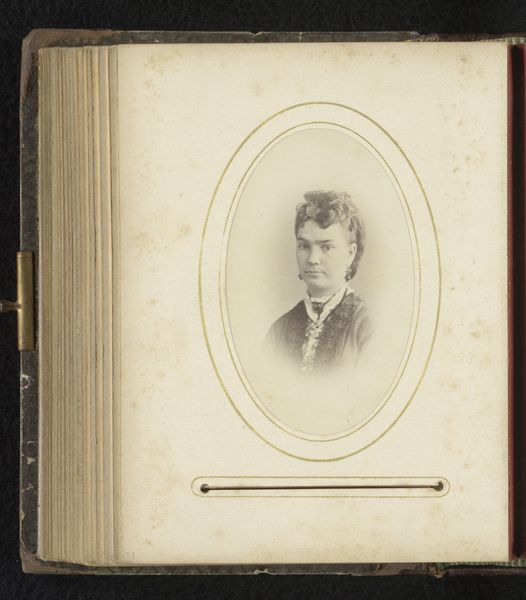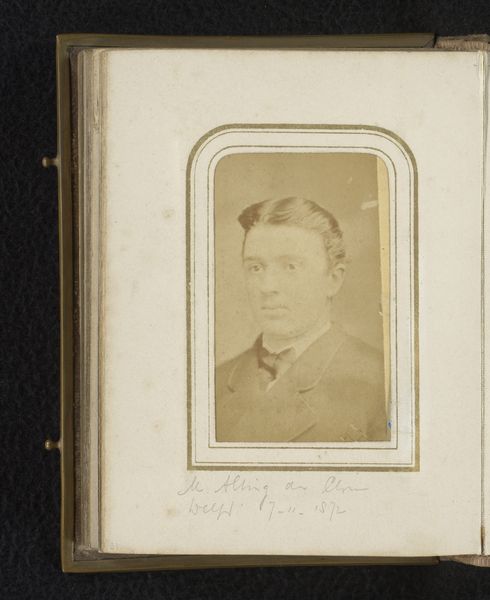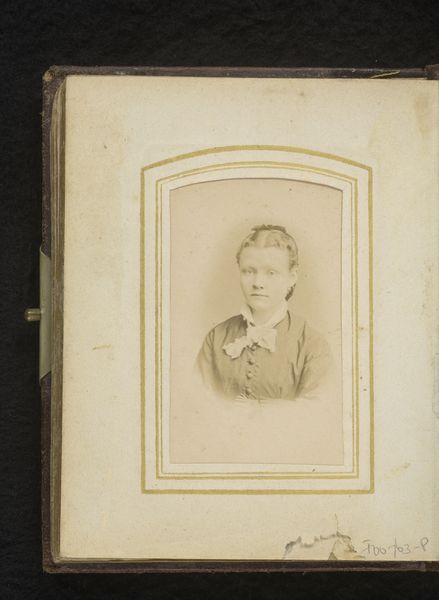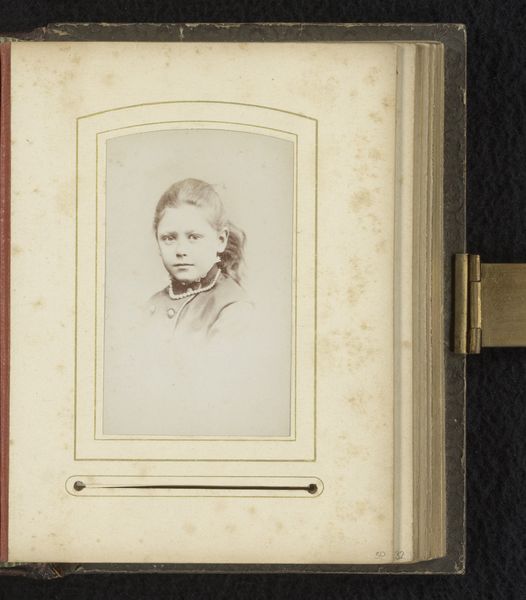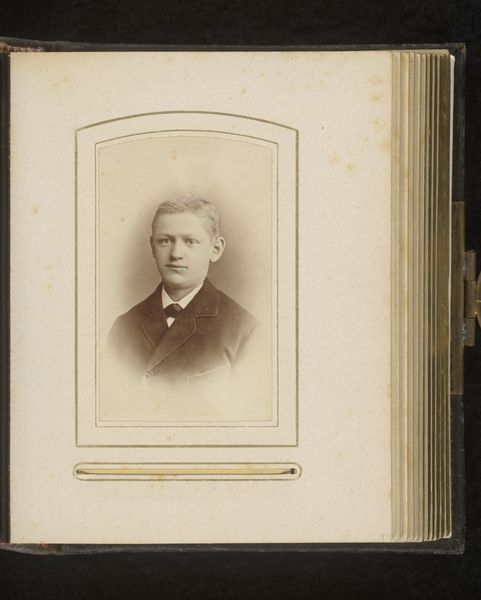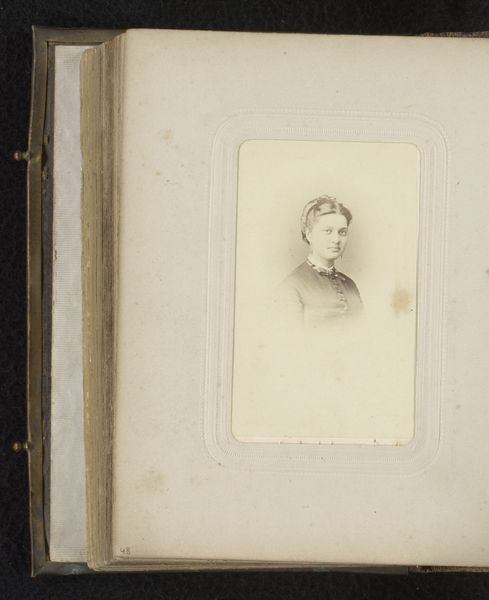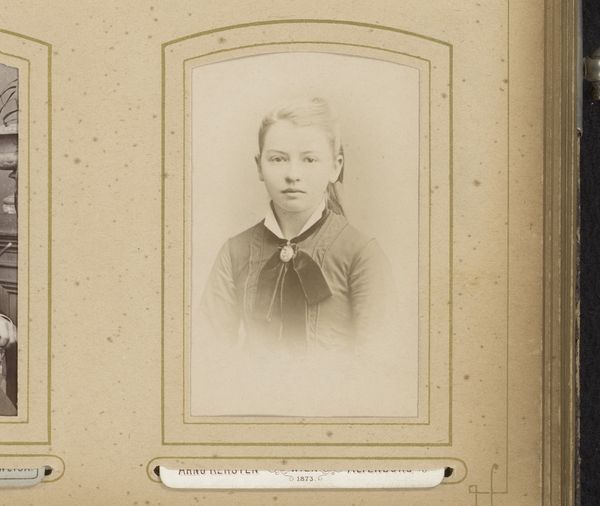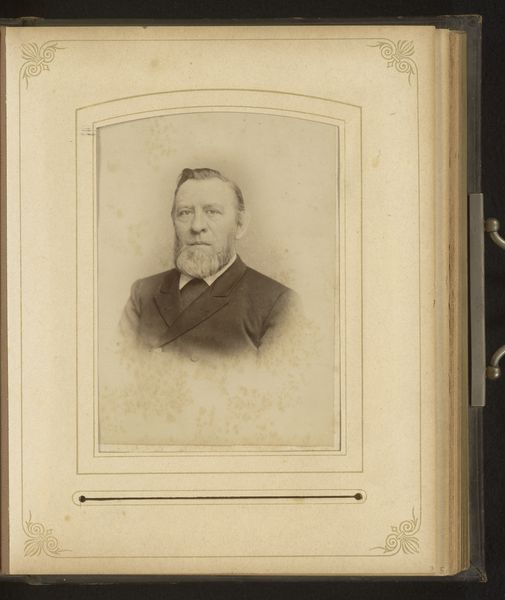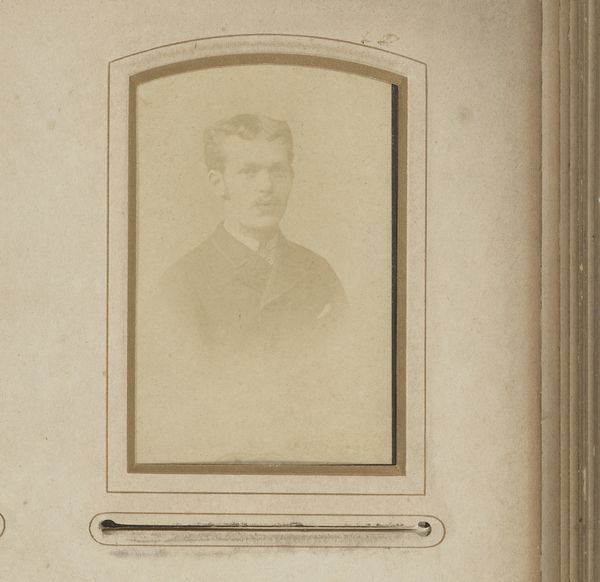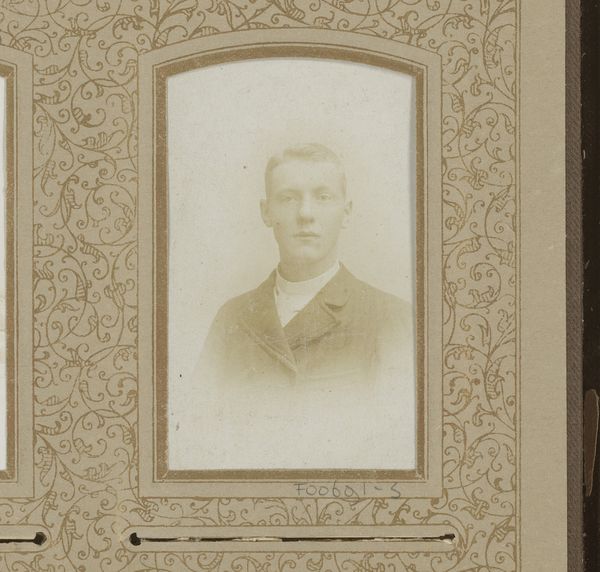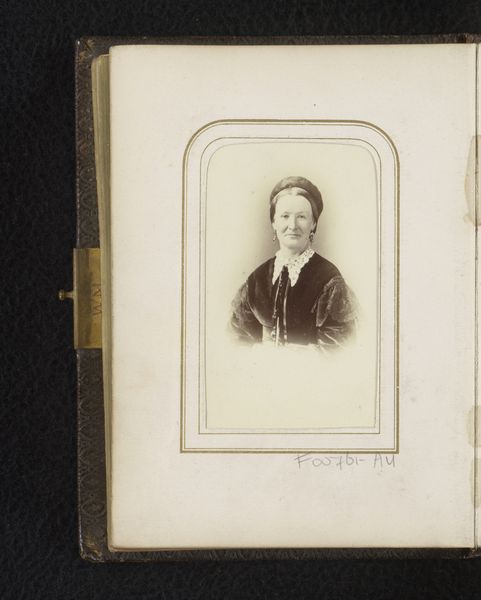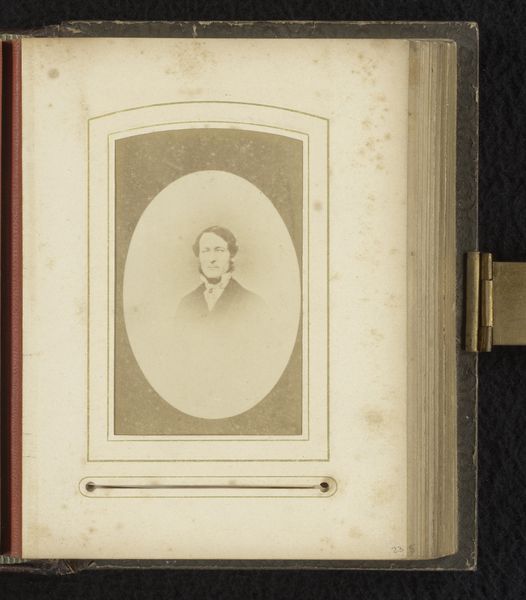
photography, albumen-print
#
portrait
#
photography
#
albumen-print
#
realism
Dimensions: height 83 mm, width 52 mm
Copyright: Rijks Museum: Open Domain
Curator: Here we have Albert Greiner's "Portret van een jongeman," dating from 1874 to 1887. The piece is an albumen print presented in a photo album. Editor: There's an appealing austerity to it, wouldn't you agree? The limited tonal range focuses your attention right to the young man’s steady gaze. Curator: Indeed. The albumen print process itself is significant. It was the first commercially exploitable method of producing photographic positives from a negative, completely altering image production and dissemination in that period. Look at the labour and material costs! Each print meticulously crafted using egg whites and silver nitrate! Editor: True, but what about the aesthetic outcome? Greiner has carefully arranged the lighting to emphasize the subject’s features, lending him a somewhat heroic quality even with his commonplace attire. The composition— the framing of his face—suggests dignity. Curator: But his 'commonplace attire,' as you put it, is important. It shows how photography democratized portraiture. Previously, only the wealthy could afford painted portraits, whereas with photography, members of the rising middle class could represent themselves. This challenged pre-existing status symbols. Editor: An intriguing tension arises between the individual subject and the constraints of photographic technology, I think. The restricted range of motion in the man's expression conveys almost no emotion; it's quite detached, but the technology has recorded something very real that would be lost in painting. Curator: It also prompts thoughts about the economics of photographic studios. Portraiture studios sprang up catering to these new classes. Photographers needed materials, equipment, and staff – consider the impact of the industrial manufacture of photography and its influence on capitalist society! Editor: You've given me a whole new respect for these old images! It really makes you consider a totally different point of view! Curator: That's what's interesting about these historical representations. They contain so many layers that we need to excavate through material histories.
Comments
No comments
Be the first to comment and join the conversation on the ultimate creative platform.
